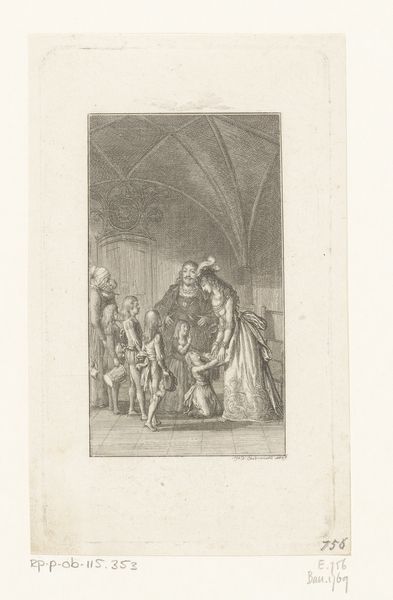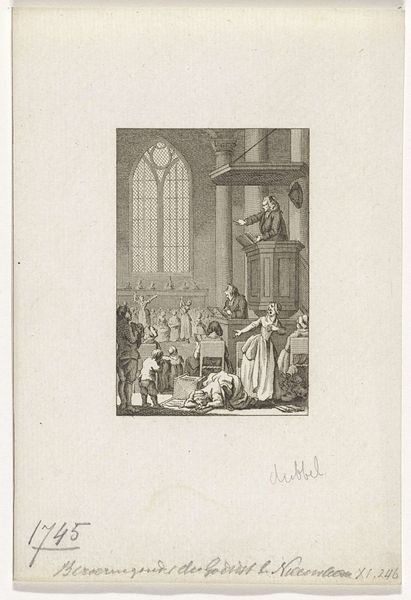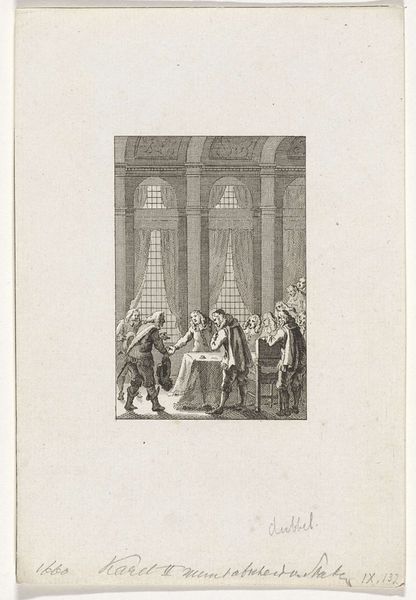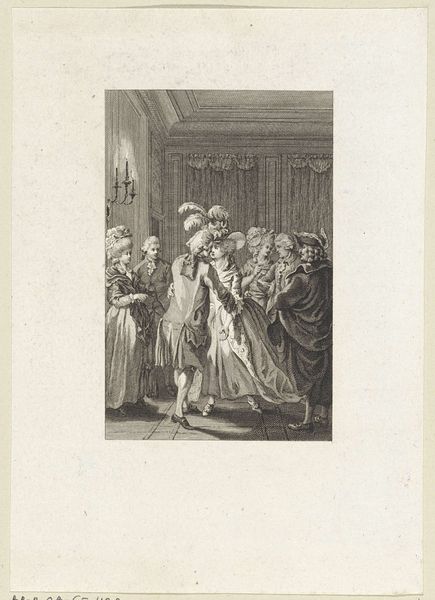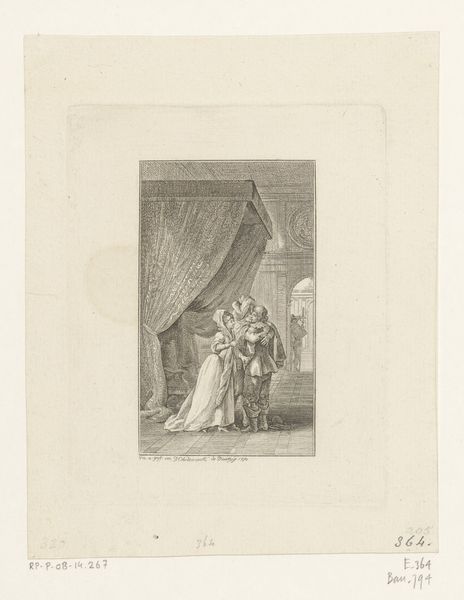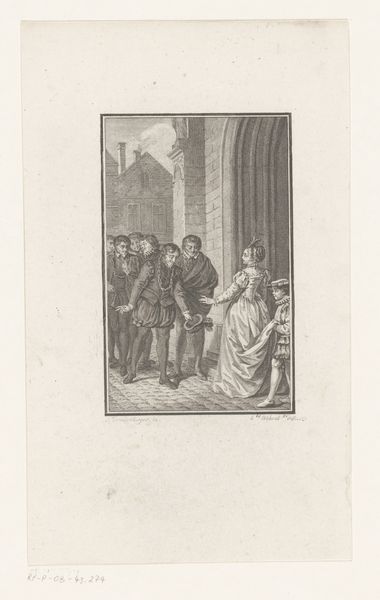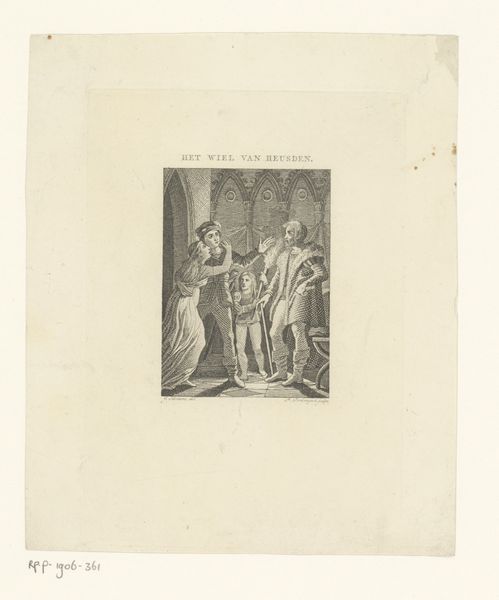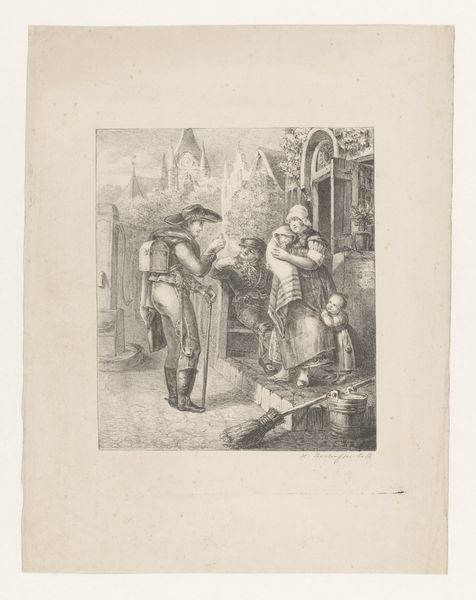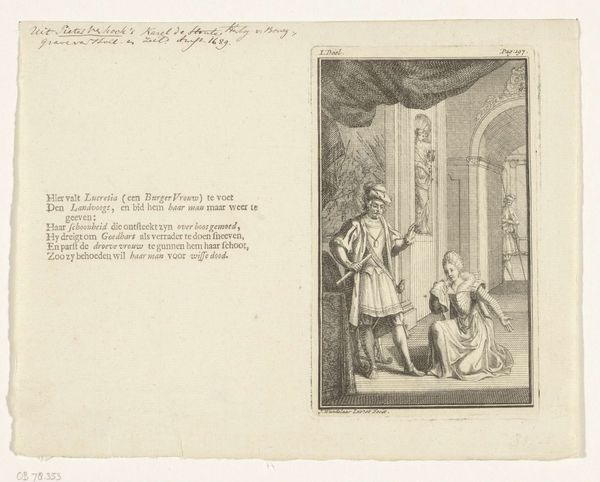
Huwelijk van Willem van Oranje en Charlotte de Bourbon, 1575 1783 - 1795
0:00
0:00
Dimensions: height 160 mm, width 100 mm
Copyright: Rijks Museum: Open Domain
Editor: Here we have Reinier Vinkeles' "Marriage of William of Orange and Charlotte de Bourbon, 1575," made between 1783 and 1795. It's a print, an etching, an engraving—various processes combined. The scene depicts a wedding inside what appears to be a church, but I'm struck by how controlled and almost manufactured the emotion feels. What jumps out at you? Curator: For me, it's the explicit *making* on display. Consider the labor: the artist's hand meticulously crafting each line through engraving and etching. Think about the socio-economic conditions of printmaking in the late 18th century— the rise of a market for historical and commemorative imagery. What kind of workshop might have produced this print, and who consumed it? The print serves as both art object, a representation, but also an object within the history of material culture. Editor: That's a fascinating way to look at it, completely changing the question! I was caught up in the ‘art’ of it, ignoring its actual construction and place within a larger market. So, you’re less interested in the supposed 'romance' and more in its status as a commodity? Curator: Precisely! I'd argue that the very notion of 'romance' here is itself a carefully constructed commodity, manufactured through the precise and deliberate labor of the printmaker. Consider the paper itself, where did it come from, who processed it? Each element speaks to material practices. How might a contemporary audience have perceived this print? Did they focus on the romantic narrative or recognize the artistry involved in its creation? Editor: I see your point. By focusing on the materiality and production, we understand so much more about its original function. Curator: Absolutely! And in doing so, we begin to dismantle the artificial barriers often erected between “high art” and the seemingly mundane realities of production and consumption. Editor: This has really made me rethink how I approach art history. It is not only looking at "beauty" but looking *through* the object. Curator: Agreed, this focus creates richer insights, grounding artistic expression within a complex web of social, economic, and material relationships.
Comments
No comments
Be the first to comment and join the conversation on the ultimate creative platform.
